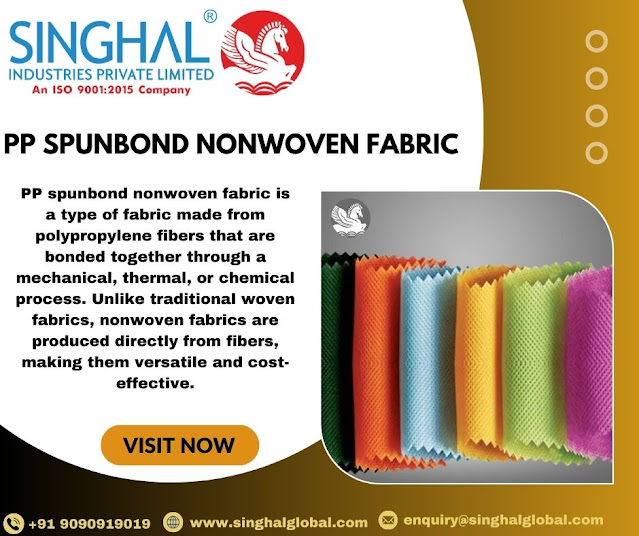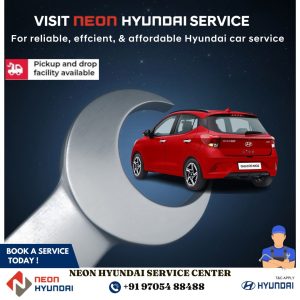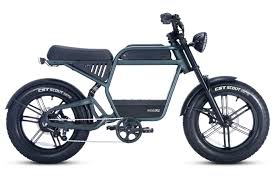Understanding the Manufacturing Process of PP Spunbond Nonwoven Fabric

Polypropylene Spunbond Nonwoven Fabric, often abbreviated as PP nonwoven fabric, is a versatile material with a wide range of applications across industries such as medical, agriculture, packaging, and more. Singhal Industries, among other manufacturers, plays a significant role in producing this fabric, meeting the growing demand for cost-effective and sustainable materials. In this article, we’ll delve into the intricate manufacturing process of PP spunbond nonwoven fabric, exploring its stages and the role of key players like Singhal Industries.
Raw Materials: Polypropylene and Additives
The production of PP spunbond nonwoven fabric begins with the selection of raw materials. Polypropylene, a thermoplastic polymer known for its strength and durability, serves as the core material. Additionally, additives and enhancements may be incorporated to modify specific properties of the fabric, such as color, UV resistance, or flame retardancy.
Extrusion: Melting and Filtration
The first step in the manufacturing process is extrusion. Polypropylene resin pellets are melted at high temperatures, typically above 200°C, in an extruder. The molten polymer is then filtered to remove any impurities or contaminants that could affect the quality of the final product. This ensures that the spunbond nonwoven fabric maintains its desired properties and consistency.
Spinning: Creating Continuous Filaments
Once filtered, the molten polymer is forced through spinnerets, small holes in a spinneret plate, to create continuous filaments. These filaments are drawn and stretched to align the polymer chains, increasing strength and toughness. The speed of spinning and the size of the spinneret holes determine the thickness and density of the resulting fabric.
Web Formation: Laying and Bonding the Fibers
The spun filaments are then laid onto a moving conveyor belt in a random or parallel orientation, depending on the desired characteristics of the fabric. As the filaments pass over the conveyor belt, they are bonded together using various methods such as heat, pressure, or chemical bonding. This bonding process creates a cohesive web of fibers, forming the basis of the nonwoven fabric.
Finishing: Enhancing Properties
After bonding, the fabric undergoes finishing processes to enhance its properties further. This may involve treatments such as calendaring, where the fabric is passed between heated rollers to improve smoothness and uniformity. Additional treatments may include coating or laminating to impart water resistance, antimicrobial properties, or other desired characteristics.
Quality Control Measures
Throughout the manufacturing process, strict quality control measures are implemented to ensure the consistency and integrity of the PP Non Woven Fabric Thickness and weight consistency are monitored using specialized equipment, while strength testing ensures the fabric meets industry standards for durability and performance. Uniformity checks are also conducted to identify any defects or irregularities that could impact the final product’s quality.
Applications Across Industries
PP spunbond nonwoven fabric finds widespread applications across various industries due to its versatility and performance. In the medical sector, it is used for surgical gowns, masks, and disposable medical supplies. In agriculture, it serves as ground cover, crop protection, and mulching material. In packaging, it provides cushioning, insulation, and protection for goods during transit. Additionally, it is utilized in geotextiles for erosion control, drainage, and soil stabilization.
Singhal Industries: Leading the Way
Singhal Industries stands out as a leading manufacturer of PP spunbond nonwoven fabric, known for its commitment to quality, innovation, and customer satisfaction. With state-of-the-art manufacturing facilities and a dedicated research and development team, Singhal Industries produces a wide range of high-quality PP nonwoven fabrics tailored to meet the diverse needs of its customers. By leveraging advanced technologies and sustainable practices, Singhal Industries continues to drive growth and excellence in the nonwoven fabric industry.
In conclusion, the manufacturing process of PP Spunbond Non Woven Fabric is a complex yet fascinating journey that involves several key steps, from extrusion and spinning to web formation and finishing. With its numerous advantages and applications, PP spunbond nonwoven fabric has become an indispensable material in various industries, driving innovation and sustainability. As industry leaders like Singhal Industries continue to push boundaries and set new standards, the future looks promising for PP spunbond nonwoven fabric and its role in shaping a more resilient and sustainable world.
FAQs
- Is PP spunbond nonwoven fabric recyclable?
Yes, PP spunbond nonwoven fabric is recyclable, contributing to sustainability efforts and reducing environmental impact. - What are the primary advantages of PP spunbond nonwoven fabric?
PP spunbond nonwoven fabric offers advantages such as strength, durability, breathability, and cost-effectiveness compared to traditional woven fabrics. - How does PP spunbond nonwoven fabric differ from other types of nonwoven fabrics?
PP spunbond nonwoven fabric is manufactured using a continuous extrusion and spinning process, resulting in a strong and uniform fabric. In contrast, other nonwoven fabrics like needle-punched and melt-blown are produced using different techniques, leading to variations in properties and applications. - What role does Singhal Industries play in the production of PP spunbond nonwoven fabric?
Singhal Industries is a leading manufacturer of PP spunbond nonwoven fabric, known for its quality products, advanced manufacturing facilities, and commitment to sustainability. The company plays a crucial role in meeting the growing demand for PP nonwoven fabrics across industries. - How can businesses benefit from using PP spunbond nonwoven fabric?
Businesses can benefit from using PP spunbond nonwoven fabric due to its versatility, durability, and cost-effectiveness. Whether in medical, agricultural, packaging, or geotextile applications, PP spunbond nonwoven fabric offers a reliable solution for various needs.





